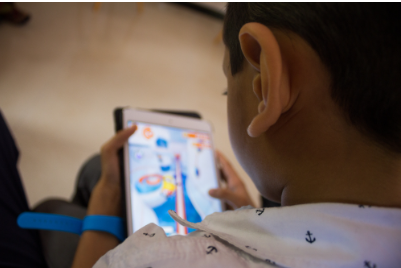 Artificial intelligence (AI) offers practical ways to lighten staff workloads, stretch tight budgets, and deliver more personalized services—without requiring a team of programmers. From simple chat assistants to automated accessibility checks, AI can help your organization work smarter and focus on what truly matters: empowering the people you serve. We’ve included links to AI support tools at the end of the article that we hope you find useful.
Artificial intelligence (AI) offers practical ways to lighten staff workloads, stretch tight budgets, and deliver more personalized services—without requiring a team of programmers. From simple chat assistants to automated accessibility checks, AI can help your organization work smarter and focus on what truly matters: empowering the people you serve. We’ve included links to AI support tools at the end of the article that we hope you find useful.
Smart Intake & Support
Many nonprofits use AI-powered chatbots to handle routine questions—like program eligibility, office hours, or basic application steps—via web, text, or Facebook Messenger. These bots can guide users through forms, suggest next steps, and even flag urgent needs for a human follow-up. By automating frontline inquiries, small teams save hours each week and redirect effort toward deeper, one-on-one support
Accessible Websites, Automatically
Keeping your site fully ADA-compliant can feel overwhelming—especially when new content goes live every day. AI accessibility tools scan your pages for issues (missing image descriptions, low color contrast, keyboard navigation gaps) and inject the fixes behind the scenes. That means fewer manual audits and a smoother experience for visitors who rely on screen readers or other assistive technology
Streamlined Administration
Beyond service delivery, AI can tackle back-office tasks:
Donor insights: Automatically segment supporters by giving patterns and predict which outreach will resonate.
Grant research: Scan thousands of grant listings to highlight the best fits for your mission.
Routine workflows: Schedule emails, generate basic reports, and set reminders—all with minimal setup.
These efficiencies free your team to spend less time on data entry and more on relationship-building and program innovation
Empowering Your Constituents
Assistive AI applications are transforming daily life for people with disabilities. Examples include:
Computer vision apps that describe surroundings or read printed text aloud for users with low vision.
Speech-to-text services that provide real-time captions during phone calls or in-person conversations for people who are deaf or hard of hearing.
Personalized learning tools that generate easy-read summaries or break down complex instructions into simpler steps.
By sharing these freely available apps, your organization can help constituents gain greater independence—often at little or no cost
Getting Started with AI
Identify a High-Impact Task: Pick one area (e.g., intake forms or website accessibility) where small time savings add up quickly.
Pilot a Tool: Many AI services offer nonprofit discounts or free tiers—explore a chatbot platform or an accessibility scanner, implement it on one program, and gather feedback.
Measure & Adjust: Track key metrics (time saved, error reduction, user satisfaction) and tweak settings or workflows as you learn what works best.
Scale Slowly: Once you see success in one area, introduce AI to another—grant searches, donor messaging, or constituent surveys.
With thoughtful, step-by-step adoption, AI can become a valuable partner—helping your nonprofit operate more efficiently and deliver deeper impact for people with disabilities.
Further Reading & Tools
Use these links to explore AI solutions and examples for nonprofits serving people with disabilities:
Chatbots & Support Intake
- ManyChat (nonprofit chatbot platform):https://manychat.com
- Chatfuel (AI chatbots for Messenger & web):https://chatfuel.com
Web Accessibility Automation
- accessiBe (AI-powered WCAG remediation):https://accessibe.com
- UserWay (widget-based accessibility enhancements):https://userway.org
Administration & Fundraising
- Zapier (automate workflows and notifications):https://zapier.com
- Instrumentl (AI-driven grant research):https://instrumentl.com
- Bloomerang “AI in Nonprofit Fundraising” insights: https://bloomerang.co/blog/ai-in-nonprofit-fundraising/
Assistive AI Apps for Constituents
- Microsoft Seeing AI (computer vision for low-vision users):https://www.microsoft.com/ai/seeing-ai
- ai (real-time transcription & captions):https://otter.ai
- Be My Eyes (crowd-sourced visual assistance):https://www.bemyeyes.com
- Ava (speech-to-text captions for in-person conversations):https://www.ava.me
- Microsoft Immersive Reader (read-aloud & text simplification):
https://www.microsoft.com/education/products/learning-tools/immersive-reader
Broader Accessibility Initiatives
- Microsoft AI for Accessibility (grant program & resources):
https://www.microsoft.com/ai/ai-for-accessibility
